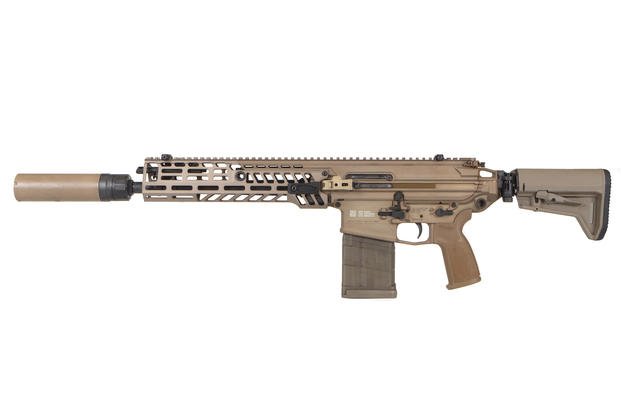
[Military] The Army has officially fielded its brand-new Next Generation Squad Weapon rifles to its first unit, bringing an end to the service's decades-long effort to replace its M4 and M16 family of military firearms.
Army Futures Command announced Thursday that soldiers from 1st Battalion, 506th Infantry Regiment, 101st Airborne Division, at Fort Campbell, Kentucky, accepted delivery of the XM7 Next Generation Rifle and XM250 Next Generation Automatic Rifle ahead of training in April.
Produced by firearm maker Sig Sauer, the XM7 is intended to replace the M4 carbine in close combat formations, while the XM250 will replace the M249 Squad Automatic Weapon, or SAW. Both new rifles are chambered in 6.8 mm to provide improved range and lethality against enemy body armor.
The Next Generation Squad Weapon series also includes the XM157 Fire Control smart scope, built by Vortex Optics, which integrates advanced technologies such as a laser range finder, ballistic calculator and digital display overlay into a next-generation rifle optic.
...
Based on Sig Sauer's MCX-Spear rifle, the XM7 features a 13-inch barrel, both standard and left-side non-reciprocating charging handles, a collapsible buttstock, a free-floating reinforced M-LOK handguard, and AR-style ergonomics. The XM250, based on Sig's LMG 6.8 mm machine gun, features quick-detach magazines and increased M1913 rail space. Both weapons come with Sig Sauer suppressors designed to reduce the blowback from toxic fumes.
Soldiers should know that the XM7 is noticeably heavier than the M4 carbine -- 9.8 pounds suppressed in a basic combat load compared to the M4's 7.4-pound combat load, per the Army -- and delivers increased recoil compared to the M4 on par with a weapon system chambered in 7.62 mm, according to Sig Sauer officials.
According to the Army's fiscal 2025 budget request, the service has a long-term plan of buying 111,428 XM7 rifles, 13,334 XM250 automatic rifles, and 124,749 XM157 Fire Control devices stretching into the 2030s.
The XM7 and XM250 "ensure increased lethality against a broad spectrum of targets beyond current/legacy weapon capabilities; increased range, accuracy, and probability of hit; reduced engagement time; suppressed flash/sound signature; and improved controllability and mobility," the Army's budget says.
 
|



















